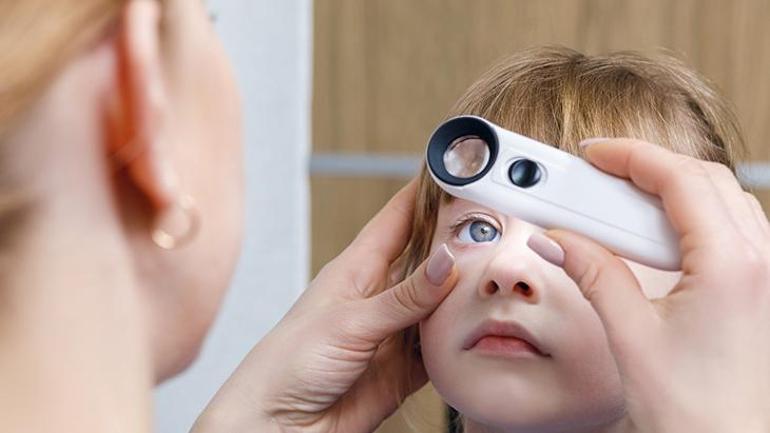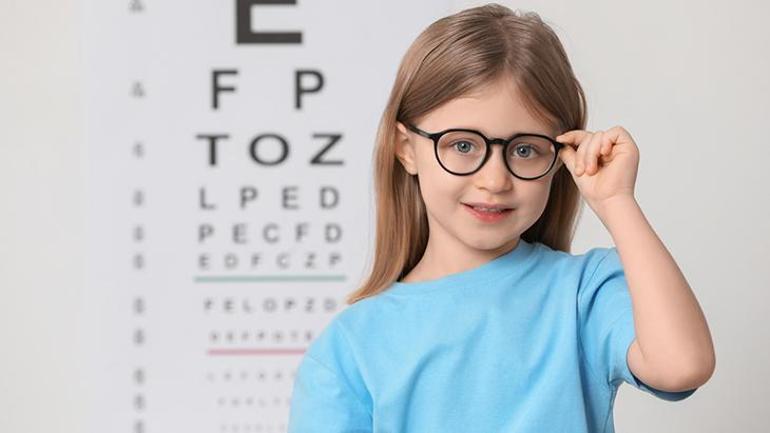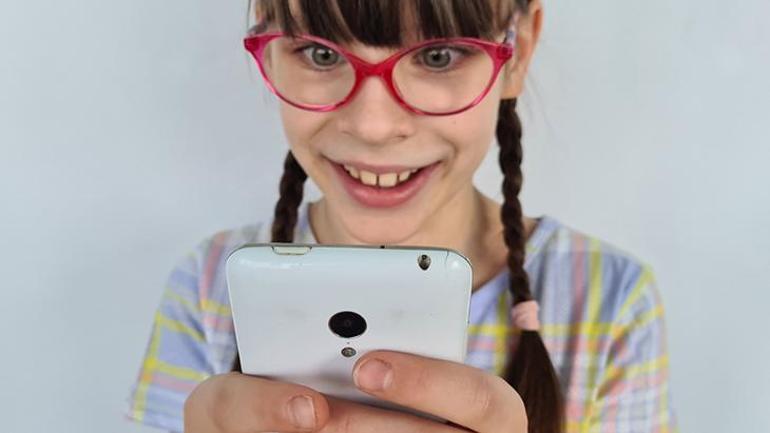If your child is constantly indoors and in front of a screen, be careful! Myopia has become an epidemic

One of the most common eye diseases worldwide, myopia, which was reported to be around 20 percent in childhood in the early 2000s, has been showing a significant increase in recent years. So much so that according to the World Health Organization, myopia has risen to 33 percent worldwide! In other words, 1 in every 3 people is diagnosed with myopia. If the necessary precautions are not taken, it is predicted that this number will reach 50 percent in 2050. In other words, it is thought that 1 in every 2 people will have myopia!
Although there is no comprehensive screening study in Turkey, clinical observations show that the frequency of myopia has increased significantly in the last 30 years and has reached approximately 9 percent in school -aged children. Ophthalmology Specialist Assoc. Prof. Dr. Semra Akkaya Turhan says, “Although genetic factors are a strong risk factor, the most important reasons for this increase, which is described as a ‘myopia epidemic’ on a global scale, are that children spend less time outdoors, especially with urbanization, and spend more time in close-range activities such as reading, using computers and tablets indoors. Because the decrease in exposure to natural daylight causes the mechanisms that prevent myopia in the eyes, such as the dopamine hormone secreted in the retinal tissue and suppressing the elongation of the eye, to not be triggered sufficiently, and as a result, myopia develops.”
May cause vision loss
Myopia is defined as a vision disorder known among the public as the inability to see far. Normally, the rays coming to the front of the eye focus on the retina and create a clear image. In myopia, due to the structural features of the eye, the rays focus in front of the retinal plane. This situation causes distant objects in particular to be seen blurry. Eye Diseases Specialist Assoc. Prof. Dr. Semra Akkaya Turhan warns that while untreated myopia negatively affects children’s academic success and quality of life, it can also pave the way for serious eye diseases such as retinal detachment, glaucoma and early cataracts, which can lead to irreversible vision loss when they reach high levels. Therefore, treating myopia at an early stage and, more importantly, reducing the risk of its development is of great importance.

5 critical rules against the risk of myopia
Ophthalmologist Assoc. Prof. Dr. Semra Akkaya Turhan points out that there are simple but effective precautions that families can take to reduce the risk of or slow down the progression of myopia, which usually occurs during school age, especially from primary school years to adolescence, and says, “Although lifestyle precautions alone do not completely prevent myopia, they reduce risk factors and slow down the progression rate of existing myopia. Families providing their children with healthy visual habits in these areas will make very valuable contributions in the long term in the fight against myopia.”
1- Spend at least 1-2 hours outdoors every day
One of the strongest protective factors in preventing myopia is that children get plenty of sunlight every day and play outdoors. According to scientific research, it has been shown that every additional 40 minutes spent outdoors significantly reduces the risk of developing myopia (up to 23 percent). Ophthalmology Specialist Assoc. Prof. Dr. Semra Akkaya Turhan, They recommend that children spend at least 1-2 hours a day outdoors, and say, “It has been proven that myopia rates are significantly lower in children who spend 10-14 hours or more outdoors per week. Therefore, opportunities such as parks, gardens and outdoor games should be increased in after-school or weekend activities.”

2- Do not spend more than 2 hours looking at the screen per day.
You should control the time your child spends in front of digital screens such as tablets, smartphones , televisions and computers as much as possible. Especially in younger age groups, prolonged exposure to screens makes it difficult for the eyes to focus on close objects and reduces blinking frequency, leading to dry eyes. Ophthalmology Specialist Assoc. Prof. Dr. Semra Akkaya Turhan states that especially for children between the ages of 5-17, screen time should not exceed 2 hours a day, and continues her words as follows:
“When screen time is prolonged, complaints of dryness, redness and blurred vision in children increase. Therefore, parents should plan the time spent in front of the screen at home and include different activities in between. It is also beneficial to apply the 20-20-20 rule. After every 20 minutes of close work, looking at a point 20 feet (~6 meters) away for at least 20 seconds relaxes the eyes. This break habit helps reduce the risk of myopia by reducing the pressure on the eyes caused by close-range focusing. Not keeping the screen brightness too high and using blue light filter glasses in the evening hours, if possible, are also measures to reduce eye fatigue.”
3- Reading distance should be at least 30-40 centimeters
Keeping the correct distance while reading, writing or using a tablet/phone also plays a key role in reducing the risk of myopia. It is recommended that the reading distance be at least 30-40 cm. It is beneficial for the child to sit upright at the desk, not to stick the book to his eyes and to use large-print texts if necessary. In addition, it is important to take regular breaks during long-term close work situations.,

4- Daylight is very important in the study room
Good lighting of the environment where the child studies or reads is of critical importance for eye health . Because insufficient light causes the pupils to dilate and focusing to become difficult, putting more strain on the eyes than necessary; this can accelerate the development of myopia in the long term. Therefore, Ophthalmology Specialist Assoc. Prof. Dr. Semra Akkaya Turhan, who points out that the use of daylight should be encouraged as much as possible in the child's study room, says, "If artificial light is used, the light should be positioned at the appropriate angle so that it does not hit the eye directly. If a desk lamp is used, the light source should illuminate the page, but should not shine into the child's eyes."
5- Pay attention to the height of the items
Another important precaution you can take against the risk of myopia is to pay attention to the arrangement of the items in your child's work environment. Assoc. Prof. Dr. Semra Akkaya Turhan emphasizes that you should adjust the height of the table and chair so that your child is in a comfortable viewing position, and says, "Your child should neither bend over nor lie down to work."
milliyet





